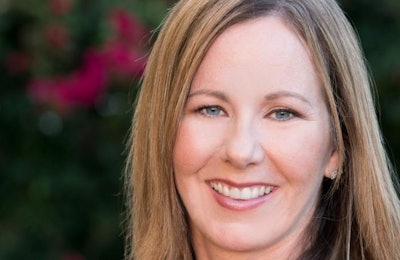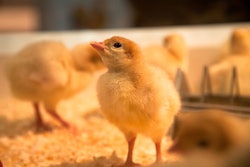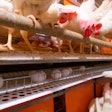
Elevated feed prices, along with the lingering impacts of COVID-19, will challenge producers in 2021.
In a WATT Poultry Chat interview, Christine McCracken, executive director for animal protein at Rabobank, spoke about the company's view on the end of 2020 and its outlook for the 2021 and the continuing global COVID-19 pandemic.
Austin Alonzo: I understand you want to discuss the end of last year and the beginning of 2021?
Christine McCracken: It's been a really challenging year. I think that doesn't come as a huge surprise to anyone. With all the disruption tied to COVID and the loss of food service markets, I think chicken producers specifically have had a really tough year. There's a lot of uncertainty in the markets even as we head into 2021 and that's not just here in the US. It's really globally, they've been forced to really reprioritize projects, conserve capital in order to get ready for a more challenging economic outlook as we head into 2021. And that's just created kind of a challenging forecasting period for all of us.
Austin Alonzo: Okay, do you have anything more specific to fourth quarter performance for the poultry industry?
Christine McCracken: Yeah, I think it was actually probably a little better, maybe in some respects as we ended the year a little strengthened in the breast meat markets tied to what appears to be a fairly low inventories of overall protein products. And that's created some room for retailers to start moving into chicken features. As we head into the beginning of next year, there was a little interest there that helps support the markets. And then we had some kind of improvement in export markets. As we ended the year, some things started to loosen up, I think, tied to slightly better outlook. In Cuba, for example, as we head into, a better economic period maybe for them as they've been able to secure some some dollars. And also, as you know, exports to Mexico have been good. So I think, that along with the additional demand from China has really helped to strengthen those dark meat markets and exports of paws, I think we're also probably seeing a little benefit from a weaker dollar. That obviously puts us in a little better position, as does, this ongoing outbreak of avian influenza that's, hitting some of our competitors in Central Europe and other parts of Europe.
Austin Alonzo: What is your outlook for 2021?
Christine McCracken: I think through the outlook for 2021, what we're really concerned about is obviously, this, this worsening outlook for feed costs. We obviously have a disappointing crop in South America continue to look at ever smaller, which is creating a lot of angst, I think, within the the poultry industry. I think you're also considering, what the prospects are to increase demand for feed, more compound feed into the hog rations in China. So as China rebuilds its hog herd and expands its poultry flock, then the increased need for feed is really putting a lot of pressure on the global market to come up with additional feed supplies. As we see it right now. I think we expect that to continue heading into the next year, which is going to just leave the rest of us paying a lot more for feed. And that affects not just us here in the US, but South America and Europe as well. So a tough year for feed, which is going to really put pressure on margins and really force the industry to constrain production in order to really maintain margins. So a tough year all around on the feed cost side.
Austin Alonzo: Do you have any comments on COVID and whether or not that'll continue to influence 2021?
Christine McCracken: Yeah, I think at least through the first half, I think that's a fair assumption based on where we are in terms of the vaccine rollout. And a lot of, the outlook will depend on whether or not we can get that under control, certainly into the first quarter. It looks a little tough, you know, ongoing shutdowns, especially in hard hit areas here in the U.S., but also in our export markets that are going to continue to keep those food service sales really tight. I'm a little concerned about that. But as we head, into the second half, we certainly think things could improve. And hopefully we'll get some distribution of vaccine and we'll be in good shape there. So better outlook for the end of the year.
This transcript edited for length and clarity
View our continuing coverage of the coronavirus/COVID-19 pandemic.















